化学学报 ›› 2025, Vol. 83 ›› Issue (4): 401-414.DOI: 10.6023/A24120376 上一篇 下一篇
综述
王丽英a,b, 于吉攀b,c,*( ), 刘峙嵘a,*(
), 刘峙嵘a,*( ), 石伟群d,*(
), 石伟群d,*( )
)
投稿日期:2024-12-20
发布日期:2025-02-14
作者简介: |
王丽英, 2022年6月毕业于南华大学核科学技术学院, 获工学学士学位; 2022年9月至今为东华理工大学和中国科学院高能物理研究所联合培养研究生. |
 |
于吉攀, 副研究员. 2008年获江苏师范大学学士学位; 2011年获南开大学硕士学位; 2014年获清华大学博士学位; 2014年7月至2016年7月清华大学化学系博士后; 2016年7月加入中国科学院高能物理研究所核能放射化学实验室. 目前主要研究方向: 锕系元素化学. |
 |
刘峙嵘, 本科毕业于青岛理工大学, 博士毕业于中国原子能科学研究院. 在国内外学术期刊上发表百余篇学术论文、专利12项; 获省部级奖6项. 先后主持国家自然科学基金面上/地区项目/江西省自然科学基金项目/江西省科技支撑计划项目多项. 国家自然科学基金函评专家、中国博士后科学基金评审专家、中国博士后科学基金特别资助评审专家、教育部留学归国人员科研启动基金评审专家. 中国辐射防护学会环境放射化学分会理事、中国核学会锕系元素物理与化学分会理事、中国核学会核化工分会理事. Journal of Hazardous Materials、Environmental Science & Technology、Applied Surface Science 等国际学术刊物审稿专家. |
 |
石伟群, 上海交通大学特聘教授, 国家杰出青年科学基金获得者, 长期致力于核燃料循环化学相关基础研究. 在JACS、Angew. Chem.、Chem、Chem. Sci.、CCS Chem.、Nat. Commun.、Adv. Mater.等国际知名期刊发表SCI论文300余篇, 成果被国内外同行广泛关注和引用, 文章总引18000余次, H因子67 (Google Scholar), 2019~2023年每年均入选Elsevier中国高被引学者榜单(核科学技术). 分别担任期刊《Supramolecular Materials》副主编, 《Chinese Chemical Letters》、《Journal of Nuclear Fuel Cycle and Waste Technology》、《International Journal of Advanced Nuclear Reactor Design and Technology》和《Journal of Nuclear Science and Technology》的编委与国际顾问编委, 中文期刊《核化学与放射化学》编委. 现为中国核学会锕系物理与化学分会副理事长、中国有色金属学会熔盐化学与技术专业委员会副主任委员、中国化学会核化学与放射化学专业委员会委员、中国核学会核化工分会常务理事兼副秘书长. |
基金资助:
Liying Wanga,b, Jipan Yub,c( ), Zhirong Liua(
), Zhirong Liua( ), Weiqun Shid(
), Weiqun Shid( )
)
Received:2024-12-20
Published:2025-02-14
Contact:
E-mail: Supported by:文章分享
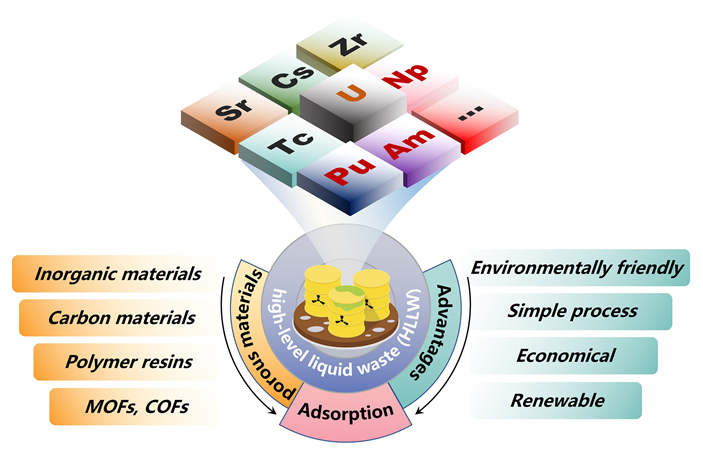
分离-嬗变技术不仅减少了放射性废物的长期危害, 还降低了核废料处理过程中的环境风险. 超铀元素在高放废液中的相对毒性强且半衰期较长; 因此, 从高放废液中有效分离超铀元素是分离-嬗变的必要条件和关键技术之一. 吸附法由于操作简单, 不产生二次废物等优势受到广泛关注. 本文综合讨论了固相吸附材料的优势、面临的挑战以及可能的应用前景, 系统总结了无机多孔材料、碳基多孔材料、聚合物树脂、金属有机框架和共价有机框架等材料在超铀元素分离中的研究进展, 详细讨论了它们在吸附性能、选择性、稳定性和再生能力等方面的优势. 同时, 也指出了当前研究中存在的挑战及机器学习引导材料合成的前景, 这对于开发更高效、更环保的超铀元素吸附材料, 以及实现这些材料在实际核能处理中的应用, 具有重要的指导意义.
王丽英, 于吉攀, 刘峙嵘, 石伟群. 多孔材料在超铀元素分离中的应用研究进展[J]. 化学学报, 2025, 83(4): 401-414.
Liying Wang, Jipan Yu, Zhirong Liu, Weiqun Shi. Advances in Porous Materials for Transuranic Element Separation[J]. Acta Chimica Sinica, 2025, 83(4): 401-414.
| 多孔材料类型 | 优点 | 缺点 |
|---|---|---|
| 无机多孔材料 | 制备工艺简单, 成本低, 吸附容量高, 稳定性强 | 选择性差, 产生的固体废物容易对环境造成影响 |
| 碳基多孔材料 | 环境友好, 选择性高, 稳定性强 | 制备复杂, 成本高, 再生能力弱 |
| 聚合物树脂 | 制备工艺简单, 成本低, 易产业化, 选择性高, 环境友好 | 稳定性差, 配体易脱落, 传质效率低 |
| 金属有机框架 (MOFs) | 选择性高, 动力学快, 可设计性强 | 稳定性较差, 密度大 |
| 共价有机框架 (COFs) | 选择性高, 吸附容量高, 稳定性强, 可设计性强 | 种类有限, 粉体材料难以实现工业化 |
| 多孔材料类型 | 优点 | 缺点 |
|---|---|---|
| 无机多孔材料 | 制备工艺简单, 成本低, 吸附容量高, 稳定性强 | 选择性差, 产生的固体废物容易对环境造成影响 |
| 碳基多孔材料 | 环境友好, 选择性高, 稳定性强 | 制备复杂, 成本高, 再生能力弱 |
| 聚合物树脂 | 制备工艺简单, 成本低, 易产业化, 选择性高, 环境友好 | 稳定性差, 配体易脱落, 传质效率低 |
| 金属有机框架 (MOFs) | 选择性高, 动力学快, 可设计性强 | 稳定性较差, 密度大 |
| 共价有机框架 (COFs) | 选择性高, 吸附容量高, 稳定性强, 可设计性强 | 种类有限, 粉体材料难以实现工业化 |




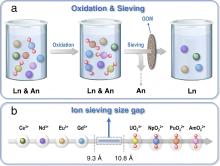

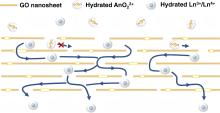





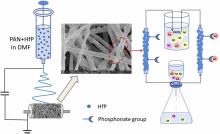

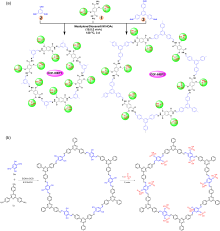

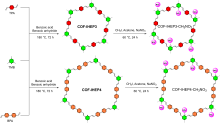

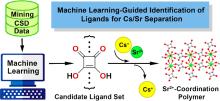

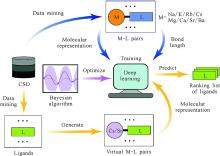

| [1] |
Usman, O.; Ozkan, O.; Ike, G. N. J. Clean. Prod. 2024, 451, 142070.
|
| [2] |
Li, K.; Yan, C.-C.; Wang, J.-R.; Zhu, K.; Guo, J.-J.; Zhang, Y.-G.; Shi, G.-Z.; Yin, Y.-C.; Cheng, L.-W.; Sun, L.; Wang, Y.-M.; Zhang, H.-L.; Sun, Y.; Yuan, J.-Y.; Ma, W.-L.; Ji, G.-X.; Chai, Z.-F.; Wang, Y.-X.; Ouyang, X.-P.; Wang, S.-A. Nature 2024, 633, 811.
|
| [3] |
Bashir, M. F.; Ma, B.-L.; Sharif, A.; Ao, T.; Koca, K. Technol. Soc. 2023, 75, 102385.
|
| [4] |
Sadekin, S.; Zaman, S.; Mahfuz, M.; Sarkar, R. Energy Procedia 2019, 160, 513.
|
| [5] |
Poumadère, M.; Bertoldo, R.; Samadi, J. WIREs Clim. Change 2011, 2, 712.
|
| [6] |
Myasoedov, B. F.; Kalmykov, S. N.; Kulyako, Yu. M.; Vinokurov, S. E. Geochem. Int. 2016, 54, 1156.
|
| [7] |
Rodríguez-Penalonga, L.; Moratilla Soria, B. Energies 2017, 10, 1235.
|
| [8] |
Madic, C.; Boullis, B.; Baron, P.; Testard, F.; Hudson, M. J.; Liljenzin, J.-O.; Christiansen, B.; Ferrando, M.; Facchini, A.; Geist, A.; Modolo, G.; Espartero, A. G.; De Mendoza, J. J. Alloys Compd. 2007, 444-445, 23.
|
| [9] |
Ewing, R. C. Mineral. Mag. 2011, 75, 2359.
|
| [10] |
Modolo, G.; Wilden, A.; Geist, A.; Magnusson, D.; Malmbeck, R. Radiochim. Acta 2012, 100, 715.
|
| [11] |
Abderrahim, H. A.; Giot, M. Sustainability 2021, 13, 12643.
|
| [12] |
Salvatores, M. Nucl. Eng. Des. 2005, 235, 805.
|
| [13] |
Chen, J.; Wang, J.-C. Prog. Chem. 2011, 23, 1366. (in Chinese)
|
|
(陈靖, 王建晨, 化学进展, 2011, 23, 1366.)
|
|
| [14] |
Veliscek-Carolan, J. J. Hazard. Mater. 2016, 318, 266.
doi: S0304-3894(16)30648-3 pmid: 27427893 |
| [15] |
Zhang, H.-L.; Li, A.; Li, K.; Wang, Z.-P.; Xu, X.-C.; Wang, Y.-X.; Sheridan, M. V.; Hu, H.-S.; Xu, C.; Alekseev, E. V.; Zhang, Z.-Y.; Yan, P.; Cao, K.-C.; Chai, Z.-F.; Albrecht-Schönzart, T. E.; Wang, S.-A. Nature 2023, 616, 482.
|
| [16] |
Du, X.-W.; Ye, Q.-Z.; Xu, M.; Wan, Y.-X.; Peng, X.-J.; Su, G.; Yang, Y.; Gao, X.; Shi, X.-M. Chin. J. Eng. Sci. 2018, 20, 17. (in Chinese)
|
|
(杜祥婉, 叶奇蓁, 徐銤, 万元熙, 彭先觉, 苏罡, 杨勇, 高翔, 师学明, 中国工程科学, 2018, 20, 17.)
doi: 10.15302/J-SSCAE-2018.03.003 |
|
| [17] |
Miguirditchian, M.; Vanel, V.; Marie, C.; Pacary, V.; Charbonnel, M.-C.; Berthon, L.; Hérès, X.; Montuir, M.; Sorel, C.; Bollesteros, M.-J.; Costenoble, S.; Rostaing, C.; Masson, M.; Poinssot, C. Solvent Extr. Ion Exch. 2020, 38, 365.
|
| [18] |
Magnusson, D.; Christiansen, B.; Glatz, J.; Malmbeck, R.; Modolo, G.; Serrano‐Purroy, D.; Sorel, C. Solvent Extr. Ion Exch. 2009, 27, 26.
|
| [19] |
Serrano-Purroy, D.; Baron, P.; Christiansen, B.; Glatz, J.-P.; Madic, C.; Malmbeck, R.; Modolo, G. Sep. Purif. Technol. 2005, 45, 157.
|
| [20] |
Takao, K.; Ikeda, Y. Eur. J. Inorg. Chem. 2020, 2020, 3443.
|
| [21] |
De Jesus, K.; Rodriguez, R.; Baek, D. L.; Fox, R. V.; Pashikanti, S.; Sharma, K. J. Mol. Liq. 2021, 336, 116006.
|
| [22] |
Zhang, Y.; Li, X.; Wang, W.-T. J. Nucl. Radiochem. 2024, 46, 37. (in Chinese)
|
|
(张烨, 李想, 王文涛, 核化学与放射化学, 2024, 46, 37.)
|
|
| [23] |
Zu, J.-H.; Fu, L.-X.; Pan, X.-H.; Wang, H. Nucl. Tech. 2020, 43, 34. (in Chinese)
|
|
(俎建华, 付凌霄, 潘晓晗, 王焕, 核技术, 2020, 43, 34.)
|
|
| [24] |
Chi, Z.-X.; Luo, S.; Tian, J.-L.; Jiang, C.-X.; Zhou, J.-L.; Deng, Y.; Pan, Q. Appl. Chem. Ind. 2019, 48, 656. (in Chinese)
|
|
(池哲鑫, 罗爽, 田景林, 姜春雪, 周江林, 邓煜, 潘茜, 应用化工, 2019, 48, 656.)
|
|
| [25] |
Meng, Y.; Ni, S.; Liu, Y.-F.; Wang, W.-J.; Zhao, Y.; Zhu, Y.-D.; Yang, L.-R. CIESC J. 2024, 75, 1616. (in Chinese)
|
|
(孟园, 倪善, 刘亚锋, 王文杰, 赵越, 朱育丹, 杨良嵘, 化工学报, 2024, 75, 1616.)
doi: 10.11949/0438-1157.20231276 |
|
| [26] |
Xu, Y.; Wang, P.; Zhao, M.; Niu, Z.-W.; Pan, D.-Q.; Wu, W.-S. At. Energy Sci. Technol. 2019, 53, 1773. (in Chinese)
|
|
(徐杨, 王鹏, 赵敏, 牛智伟, 潘多强, 吴王锁, 原子能科学技术, 2019, 53, 1773.)
doi: 10.7538/yzk.2019.youxian.0334 |
|
| [27] |
Xie, Y.-H.; Yu, L.; Chen, L.; Chen, C.; Wang, L.; Liu, F.-L.; Liao, Y.; Zhang, P.; Chen, T.; Yuan, Y.-H.; Lu, Y.-X.; Huang, B.-Y.; Yang, H.; Wang, S.-H.; Wang, S.-A.; Ma, L.-J.; Luo, F.; Liu, Y.-H.; Hu, B.-W.; Wang, H.-Q.; Pan, D.-Q.; Zhu, W.-K.; Wang, N.; Wang, Z.; Mao, L.; Ma, S.-Q.; Wang, X.-K. Sci. China Chem. 2024, 67, 3515.
|
| [28] |
Khayambashi, A.; Chen, L.; Dong, X.; Li, K.; Wang, Z.-P.; He, L.-W.; Annam, S.; Chen, L.-X.; Wang, Y.-X.; Sheridan, M. V.; Xu, C.; Wang, S.-A. Chin. Chem. Lett. 2022, 33, 3429.
|
| [29] |
Li, X.-B.; Wu, Q.-Y.; Wang, C.-Z.; Lan, J.-H.; Zhang, M.; Shi, W.-Q. Chin. Chem. Lett. 2024, 35, 109359.
|
| [30] |
Mikeska, E. R.; Wilson, R. E.; Sen, A.; Autschbach, J.; Blakemore, J. D. J. Am. Chem. Soc. 2024, 146, 21509.
|
| [31] |
Dong, X.; Xu, C.; Chen, J. Bull. Chem. 2022, 83, 289. (in Chinese)
|
|
(董雪, 徐超, 陈靖, 化学通报, 2022, 83, 289.)
|
|
| [32] |
Wang, Y.-H.; Li, W.; Luo, S.; Liu, S.-X.; Ma, C.-H.; Li, J. Acta Chim. Sinica 2018, 76, 85. (in Chinese)
|
|
(王引航, 李伟, 罗沙, 刘守新, 马春慧, 李坚, 化学学报, 2018, 76, 85.)
doi: 10.6023/A17070319 |
|
| [33] |
Xu, H.; Wang, C.-Z.; Liu, Z.-R.; Shi, W.-Q. Acta Chim. Sinica 2024, 82, 458. (in Chinese)
|
|
(徐晗, 王聪芝, 刘峙嵘, 石伟群, 化学学报, 2024, 82, 458.)
doi: 10.6023/A24020041 |
|
| [34] |
Barbette, F.; Rascalou, F.; Chollet, H.; Babouhot, J. L.; Denat, F.; Guilard, R. Anal. Chim. Acta 2004, 502, 179.
|
| [35] |
Meyer, D. J. M.; Bourg, S.; Conocar, O.; Broudic, J.-C.; Moreau, J. J. E.; Chi Man, M. W. Comptes Rendus Chim. 2007, 10, 1001.
|
| [36] |
Ning, S.-Y.; Zou, Q.; Wang, X.-P.; Liu, R.-Q.; Wei, Y.-Z.; Zhao, Y.-P.; Ding, Y.-Q. J. Radioanal. Nucl. Chem. 2016, 307, 993.
|
| [37] |
Ning, S.-Y.; Zhang, S.-C.; Zhou, J.; Zhang, W.; Wei, Y.-Z. J. Radioanal. Nucl. Chem. 2019, 322, 1023.
|
| [38] |
Ning, S.-Y.; Wang, X.-P.; Zou, Q.; Shi, W.-Q.; Tang, F.-D.; He, L.-F.; Wei, Y.-Z. Sci. Rep. 2017, 7, 14679.
|
| [39] |
Ning, S.-Y.; Zhou, J.; Zhang, S.-C.; Zhang, W.; Wei, Y.-Z. Radiochim. Acta 2020, 108, 425.
|
| [40] |
Li, H.-B.; Ye, G.-A.; Wang, X.-R.; Lin, C.-S.; Su, Z.; Liu, Z.-Y.; Zhao, X.-H. J. Nucl. Radiochem. 2010, 32, 65. (in Chinese)
|
|
(李辉波, 叶国安, 王孝荣, 林灿生, 苏哲, 刘占元, 赵兴红, 核化学与放射化学, 2010, 32, 65.)
|
|
| [41] |
Wang, Z.; Liu, M.-C.; Wang, L.; Chang, Z.-Y.; Li, H.-B. Molecules 2022, 27, 3110.
|
| [42] |
Lin, Y.-H.; Fiskum, S. K.; Yantasee, W.; Wu, H.; Mattigod, S. V.; Vorpagel, E.; Fryxell, G. E.; Raymond, K. N.; Xu, J.-D. Environ. Sci. Technol. 2005, 39, 1332.
|
| [43] |
Fryxell, G. E.; Lin, Y.-H.; Fiskum, S.; Birnbaum, J. C.; Wu, H.; Kemner, K.; Kelly, S. Environ. Sci. Technol. 2005, 39, 1324.
|
| [44] |
Burns, J. D.; Clearfield, A.; Borkowski, M.; Reed, D. T. Radiochim. Acta 2012, 100, 381.
|
| [45] |
Cao, S.-W.; Yu, J.-G. J. Photochem. Photobiol. C Photochem. Rev. 2016, 27, 72.
|
| [46] |
Yang, D.; Shi, X.-F.; Zhang, Y.-J.; Bu, X.-H. Acta Chim. Sinica 2023, 81, 1052. (in Chinese)
doi: 10.6023/A23040148 |
|
(杨地, 史潇凡, 张冀杰, 卜显和, 化学学报, 2023, 81, 1052.)
doi: 10.6023/A23040148 |
|
| [47] |
Parsons-Moss, T.; Wang, J.-X.; Jones, S.; May, E.; Olive, D.; Dai, Z.-R.; Zavarin, M.; Kersting, A. B.; Zhao, D.-Y; Nitsche, H. J. Mater. Chem. A 2014, 2, 11209.
|
| [48] |
Kumar, P.; Sengupta, A.; Singha Deb, A. K.; Dasgupta, K.; Ali, S. M. RSC Adv. 2016, 6, 107011.
|
| [49] |
Chappa, S.; Singha Deb, A. K.; Ali, S. M.; Debnath, A. K.; Aswal, D. K.; Pandey, A. K. J. Phys. Chem. B 2016, 120, 2942.
|
| [50] |
Wang, Z.-P.; Huang, L.-Q.; Dong, X.; Wu, T.; Qing, Q.; Chen, J.; Lu, Y.-X.; Xu, C. Nat. Commun. 2023, 14, 261.
|
| [51] |
Mazzoldi, P.; Carturan, S.; Quaranta, A.; Sada, C.; Sglavo, V. M. Riv. Nuovo Cimento 2013, 36, 397.
|
| [52] |
Rao, T. P.; Praveen, R. S.; Daniel, S. Crit. Rev. Anal. Chem. 2004, 34, 177.
|
| [53] |
Hubscher-Bruder, V.; Haddaoui, J.; Bouhroum, S.; Arnaud-Neu, F. Inorg. Chem. 2010, 49, 1363.
doi: 10.1021/ic9010899 pmid: 20055507 |
| [54] |
Zhang, A.-Y.; Kuraoka, E.; Hoshi, H.; Kumagai, M. J. Chromatogr. A 2004, 1061, 175.
|
| [55] |
Ansari, S.; Pathak, P.; Husain, M.; Prasad, A.; Parmar, V.; Manchanda, V. Talanta 2006, 68, 1273.
doi: 10.1016/j.talanta.2005.07.042 pmid: 18970460 |
| [56] |
Husain, M.; Ansari, S. A.; Mohapatra, P. K.; Gupta, R. K.; Parmar, V. S.; Manchanda, V. K. Desalination 2008, 229, 294.
|
| [57] |
Merrifield, R. B. J. Am. Chem. Soc. 1963, 85, 2149.
|
| [58] |
Horwitz, E. P.; McAlister, D. R.; Bond, A. H.; Barrans, R. E. Solvent Extr. Ion Exch. 2005, 23, 319.
|
| [59] |
Deepika, P.; Sabharwal, K. N.; Srinivasan, T. G.; Vasudeva Rao, P. R. Nucl. Technol. 2012, 179, 407.
|
| [60] |
Sreenivasulu, B.; Brahmananda Rao, C. V. S.; Suresh, A.; Sivaraman, N. J. Radioanal. Nucl. Chem. 2022, 331, 3623.
|
| [61] |
Pathak, S. K.; Tripathi, S. C.; Singh, K. K.; Mahtele, A. K.; Kumar, M.; Gandhi, P. M. J. Radioanal. Nucl. Chem. 2016, 308, 47.
|
| [62] |
Ruhela, R.; Panja, S.; Singh, A. K.; Dhami, P. S.; Gandhi, P. M. J. Hazard. Mater. 2016, 318, 186.
doi: S0304-3894(16)30601-X pmid: 27420390 |
| [63] |
Singh, K. K.; Panja, S.; Ruhela, R.; Kumar, M.; Tripathi, S. C.; Singh, A. K.; Chakravartty, J. K.; Bajaj, P. N. Sep. Purif. Technol. 2015, 154, 186.
|
| [64] |
Pribyl, J. G.; Taylor-Pashow, K. M. L.; Shehee, T. C.; Benicewicz, B. C. ACS Omega 2018, 3, 8181.
doi: 10.1021/acsomega.8b01057 pmid: 31458955 |
| [65] |
James, S. L. Chem. Soc. Rev. 2003, 32, 276.
|
| [66] |
Zhou, H.-C.; Kitagawa, S. Chem. Soc. Rev. 2014, 43, 5415.
|
| [67] |
Maurin, G.; Serre, C.; Cooper, A.; Férey, G. Chem. Soc. Rev. 2017, 46, 3104.
|
| [68] |
Abdul Hamid, M. R.; Shean Yaw, T. C.; Mohd Tohir, M. Z.; Wan Abdul Karim Ghani, W. A.; Sutrisna, P. D.; Jeong, H.-K. J. Ind. Eng. Chem. 2021, 98, 17.
|
| [69] |
Yuan, S. H.; Isfahani, A. P.; Yamamoto, T.; Muchtar, A.; Wu, C. Y.; Huang, G.; You, Y. C.; Sivaniah, E.; Chang, B. K.; Ghalei, B. Small Methods 2020, 4, 2000021.
|
| [70] |
Rowsell, J. L. C.; Yaghi, O. M. Microporous Mesoporous Mater. 2004, 73, 3.
|
| [71] |
Zhao, G.-G.; Qin, N.-Q.; Pan, A.; Wu, X.-Y.; Peng, C.-Y.; Ke, F.; Iqbal, M.; Ramachandraiah, K.; Zhu, J. J. Nanomater. 2019, 2019, 1.
|
| [72] |
Jin, K.; Lee, B.; Park, J. Coord. Chem. Rev. 2021, 427, 213473.
|
| [73] |
Patra, K.; Ansari, S. A.; Mohapatra, P. K. J. Chromatogr. A 2021, 1655, 462491.
|
| [74] |
Acher, E.; Hacene Cherkaski, Y.; Dumas, T.; Tamain, C.; Guillaumont, D.; Boubals, N.; Javierre, G.; Hennig, C.; Solari, P. L.; Charbonnel, M.-C. Inorg. Chem. 2016, 55, 5558.
|
| [75] |
Zhang, N.; Yuan, L.-Y.; Guo, W.-L.; Luo, S.-Z.; Chai, Z.-F.; Shi, W.-Q. ACS Appl. Mater. Interfaces 2017, 9, 25216.
|
| [76] |
Guo, X.-G.; Qiu, S.; Chen, X.-T.; Gong, Y.; Sun, X.-Q. Inorg. Chem. 2017, 56, 12357.
|
| [77] |
Li, B.-Y.; Zhang, Y.-M.; Ma, D.-X.; Shi, Z.; Ma, S.-Q. Nat. Commun. 2014, 5, 5537.
|
| [78] |
Xiong, L.-P.; Gu, M.; Yang, C.-T.; Lv, K.; Wu, F.-C.; Hu, S.; Long, X.-G. Chem. Eng. J. 2022, 430, 132753.
|
| [79] |
Zhao, X.-L.; Yu, X.-Z.; Wang, X.-Y.; Lai, S.-J.; Sun, Y.-Y.; Yang, D.-J. Chem. Eng. J. 2021, 407, 127221.
|
| [80] |
Xiong, L.-P.; Lv, K.; Gu, M.; Yang, C.-T.; Wu, F.-C.; Han, J.; Hu, S. Chem. Eng. J. 2019, 355, 159.
|
| [81] |
Qi, S.-Z.; Xiong, S.-S.; Xiong, L.-P.; Li, H.; Liu, B.-Y.; Liu, Y.; Xiong, K.; Yan, H.; Lv, K.; Liu, H.-W.; Hu, S. Inorg. Chem. 2023, 62, 10881.
|
| [82] |
Xiong, L.-P.; Lyu, K.; Zeng, Y.-Y.; Yang, C.-T.; Chi, F.-T.; Hu, S.; Long, X.-G. J. Environ. Chem. Eng. 2023, 11, 109619.
|
| [83] |
Côté, A. P.; Benin, A. I.; Ockwig, N. W.; O’Keeffe, M.; Matzger, A. J.; Yaghi, O. M. Science 2005, 310, 1166.
|
| [84] |
Wang, H.-M.; Ding, H.-M.; Meng, X.-S.; Wang, C. Chin. Chem. Lett. 2016, 27, 1376.
|
| [85] |
Li, T.; Pan, Y.; Shao, B.-B.; Zhang, X.-S.; Wu, T.; He, Q.-Y.; He, M.; Ge, L.; Zhou, L.-F.; Liu, S.; Zheng, X.-M.; Ye, J.; Liu, Z.-F. Adv. Funct. Mater. 2023, 33, 2304990.
|
| [86] |
El-Kaderi, H. M.; Hunt, J. R.; Mendoza-Cortés, J. L.; Côté, A. P.; Taylor, R. E.; O’Keeffe, M.; Yaghi, O. M. Science 2007, 316, 268.
pmid: 17431178 |
| [87] |
Yu, J.-P.; Yuan, L.-Y.; Wang, S.; Lan, J.-H.; Zheng, L.-R.; Xu, C.; Chen, J.; Wang, L.; Huang, Z.-W.; Tao, W.-Q.; Liu, Z.-R.; Chai, Z.-F.; Gibson, J. K.; Shi, W.-Q. CCS Chem. 2019, 1, 286.
|
| [88] |
Zhang, H.-D.; Wang, S.; Yu, J.-P.; Li, Z.-J.; Lan, J.-H.; Zheng, L.-R.; Liu, S.-Y.; Yuan, L.-Y.; Xiu, T.-Y.; Wang, J.-D.; Wang, X.-P.; Shi, W.-Q. Chem. Eng. J. 2023, 463, 142408.
|
| [89] |
Cao, R.-J.; Zhou, H.-Y.; Wu, Q.-Y.; Xiao, Z.; Xiu, T.-Y.; Li, J.; Tang, H.-B.; Yuan, L.-Y.; Wu, W.-S.; Shi, W.-Q. Adv. Mater. 2024, 2414659.
|
| [90] |
Wang, L.-Y.; Yu, J.-J.; Wang, S.; Liu, Y.; Song, K.-X.; Yu, J.-P.; Yuan, L.-Y.; Liu, Z.-R.; Shi, W.-Q. Chin. Chem. Lett. 2024, 110706.
|
| [91] |
Merchant, A.; Batzner, S.; Schoenholz, S. S.; Aykol, M.; Cheon, G.; Cubuk, E. D. Nature 2023, 624, 80.
|
| [92] |
Qiu, R.-Z.; Tang, J.; Chen, J.-F.; Liu, P.-C.; Wang, Q. Phys. Chem. Chem. Phys. 2024, 26, 14122.
|
| [93] |
Zhao, J.-J. Physics 2024, 53, 450. (in Chinese)
|
|
(赵纪军, 物理, 2024, 53, 450.)
|
|
| [94] |
Lu, M.-Y.; Ji, H.-N.; Zhao, Y.; Chen, Y.-X.; Tao, J.-D.; Ou, Y.-Y.; Wang, Y.; Huang, Y.; Wang, J.-L.; Hao, G.-L. ACS Appl. Mater. Interfaces 2023, 15, 1871.
|
| [95] |
Dangayach, R.; Jeong, N.; Demirel, E.; Uzal, N.; Fung, V.; Chen, Y.-S. Environ. Sci. Technol. 2025, 59, 993.
|
| [96] |
Zhu, C.-L.; Bamidele, E. A.; Shen, X.-Y.; Zhu, G.-M.; Li, B.-W. Chem. Rev. 2024, 124, 4258.
|
| [97] |
Liu, T.-Y.; Johnson, K. R.; Jansone-Popova, S.; Jiang, D.-E. JACS Au 2022, 2, 1428.
|
| [98] |
Zhang, Z.-Y.; Cheng, M.; Xiao, X.-Y.; Bi, K.-X.; Song, T.; Hu, K.-Q.; Dai, Y.-Y.; Zhou, L.; Liu, C.; Ji, X.; Shi, W.-Q. ACS Appl. Mater. Interfaces 2022, 14, 33076.
|
| [99] |
Wang, B.-B.; Zhang, Z.-Y.; Dong, Y.; Qiu, Y.-Q.; Ren, J.-Y.; Bi, K.-X.; Ji, X.; Liu, C.; Zhou, L.; Dai, Y.-Y. Inorg. Chem. 2023, 62, 13293.
|
| [100] |
Zhang, Z.-Y.; Dong, Y.; Qiu, Y.-Q.; Bi, K.-X.; Hu, K.-Q.; Dai, Y.-Y.; Zhou, L.; Liu, C.; Ji, X.; Shi, W.-Q. J. Nucl. Radiochem. 2023, 45, 456. (in Chinese)
|
|
(张智渊, 董越, 邱雨晴, 毕可鑫, 胡孔球, 戴一阳, 周利, 刘冲, 吉旭, 石伟群, 核化学与放射化学, 2023, 45, 456.)
doi: 10.7538/hhx.2023.45.05.0456 |
| [1] | 王跃, 邹莹, 张元, 郑舒婕, 王恒宇, 刘天赋, 李仁富. 锆基金属有机框架材料在氧传感器上的应用[J]. 化学学报, 2025, 83(1): 45-51. |
| [2] | 林航青, 马若茹, 江怡蓝, 许木榕, 林洋彭, 杜克钊. 用于卤素捕获的材料研究进展[J]. 化学学报, 2024, 82(1): 62-74. |
| [3] | 刘建川, 李翠艳, 刘耀祖, 王钰杰, 方千荣. 高稳定二维联咔唑sp2碳共轭共价有机框架材料用于高效电催化氧还原★[J]. 化学学报, 2023, 81(8): 884-890. |
| [4] | 陈俊畅, 张明星, 王殳凹. 晶态多孔材料合成方法的研究进展[J]. 化学学报, 2023, 81(2): 146-157. |
| [5] | 赵政嘉, 刘康, 郭燕, 于吉攀, 石伟群. 超铀金属有机化学研究进展[J]. 化学学报, 2023, 81(11): 1633-1641. |
| [6] | 张蒙茜, 冯霄. 共轭微孔聚合物膜的制备策略及其分离应用[J]. 化学学报, 2022, 80(2): 168-179. |
| [7] | 王自陶, 刘耀祖, 王钰杰, 方千荣. 一种新型磺酸修饰的共价有机框架用于二氧化碳吸收和染料吸附[J]. 化学学报, 2022, 80(1): 37-43. |
| [8] | 方婧, 赵文娟, 张明浩, 方千荣. 一种新型酰胺功能化的共价有机框架用于选择性染料吸附[J]. 化学学报, 2021, 79(2): 186-191. |
| [9] | 董雪, 曹鸿, 徐雷, 王志鹏, 陈靖, 徐超. 镎和钚与环境中无机阴离子的配位化学研究进展[J]. 化学学报, 2021, 79(12): 1415-1424. |
| [10] | 刘建国, 张明月, 王楠, 王晨光, 马隆龙. 共价有机框架材料催化研究进展[J]. 化学学报, 2020, 78(4): 311-325. |
| [11] | 朱先念, 陈芳, 翟薇, 魏炳波. 超声场中高分子乳液稳定性与多孔材料结构的调控机理研究[J]. 化学学报, 2017, 75(9): 878-883. |
| [12] | 黄刚, 陈玉贞, 江海龙. 金属有机骨架材料在催化中的应用[J]. 化学学报, 2016, 74(2): 113-129. |
| [13] | 杨文艳, 刘鸿志. 通过Heck偶联反应制备具有pH响应的吡啶基团功能化的多孔材料[J]. 化学学报, 2015, 73(6): 623-628. |
| [14] | 任浩, 朱广山. 有机多孔材料:合成策略与性质研究[J]. 化学学报, 2015, 73(6): 587-599. |
| [15] | 王昌安, 王为. 有机多孔催化研究进展[J]. 化学学报, 2015, 73(6): 498-529. |
| 阅读次数 | ||||||
|
全文 |
|
|||||
|
摘要 |
|
|||||